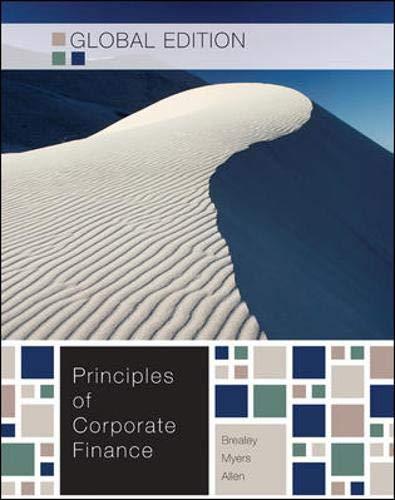Question
A pension fund manager is considering three mutual funds. The first is a stock fund, the second is a long-term government and corporate bond fund,
A pension fund manager is considering three mutual funds. The first is a stock fund, the second is a long-term government and corporate bond fund, and the third is a T-bill money market fund that yields a sure rate of 5.5%. The probability distributions of the risky funds are:
| Expected Return | Standard deviation | |
| Stock Fund (S) | 15% | 32% |
| Bond Fund (B) | 9% | 23% |
1. Tabulate and draw the investment opportunity set of the two risky funds. Use investment proportions for the stock fund of 0% to 100% in increments of 20%. What expected return and standard deviation does your graph show for the minimum-variance portfolio?
2.What is the reward-to-volatility ratio of the best feasible CAL?
3. Suppose now that your portfolio must yield an expected return of 12% and be efficient, that is, on the best feasible CAL. A. What is the standard deviation of your portfolio? B. What is the proportion invested in the T-bill fund and each of the two risky funds
4. If you were to use only the two risky funds and still require an expected return of 12%, what would be the investment proportions of your portfolio? Compare its standard deviation to that of the optimal portfolio in the previous problem. What do you conclude?
Note: Please show in excel w/ all formulas with corresponding cells used.
Step by Step Solution
There are 3 Steps involved in it
Step: 1

Get Instant Access to Expert-Tailored Solutions
See step-by-step solutions with expert insights and AI powered tools for academic success
Step: 2

Step: 3

Ace Your Homework with AI
Get the answers you need in no time with our AI-driven, step-by-step assistance
Get Started


